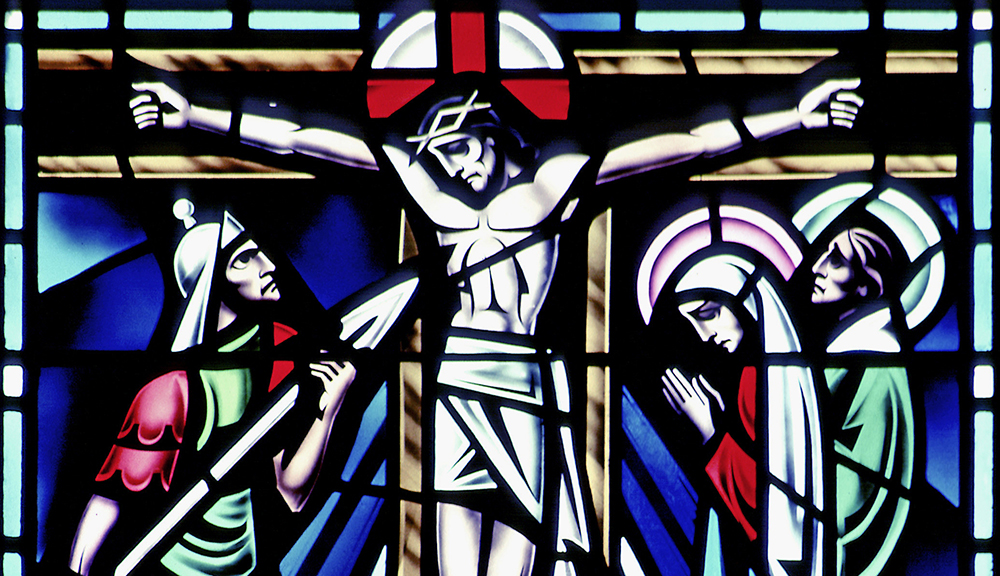Artists appear to have agreed to place the soldier’s wound on Christ’s right side (the viewer’s left), but an early carving shows the wound on the Savior’s left. Lucas Cranach (d. 1553) painted a crucified Christ without a wound and said he would add the detail if its position were revealed to him. As late as the 19th century, Eduard Manet represented Christ supported by angels, with a wounded left side.
Only St. John mentions Jesus’ head in his Gospel account, “bowing his head, he gave up his spirit” (Jn 19:30). Because we cannot determine the actual position of Jesus’ head when he died, artists have exercised some freedom when representing this aspect of the Crucified Christ.
That artists represent Christ’s head leaning to the right may reflect no more than a sensibility that the right is the more noble side. Or the artist may simply wish Christ’s head to echo the position of his wound. To show the wound on one side and Christ’s head leaning toward the other might prove distracting. We shall never know who established these conventions, but the expression on the Crucified Christ’s face reveals his love; that is what counts.

